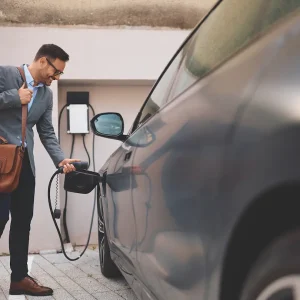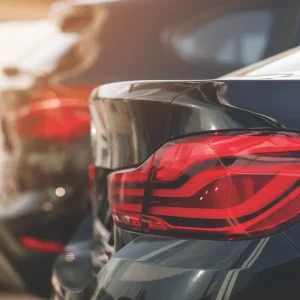You may have noticed that diesel has had something of a rough time of it over the past 18 months. It started with the Volkswagen ‘Dieselgate’ scandal that broke in September 2015, while more recently there have been concerns over nitrogen oxide (NOx) emissions and air quality in general, especially in city centres.
The NHS says that poor urban air quality – to which NOx emissions are a significant contributor – is responsible for the early deaths of 40,000 people in the UK every year.
Indeed, due to the scale of the problem older diesel cars are set to be priced out of city centres, for example with the imminent introduction of the T-Charge (Toxicity Charge) in London, which will be followed by the Ultra Low Emission Zone (ULEZ) in 2019, which will charge drivers of cars not meeting Euro6 diesel emissions regulations £12.50 over and above the existing congestion charge every time they enter the zone. Similar schemes are also set to be rolled out in other cities across the country and worldwide.
So what’s the problem?
Now that NOx has reared its ugly head it would appear diesels are not as clean in this regard compared with their CO2 emissions. The current limit for NOx emissions from a diesel car is 0.08g/km and, even the newest Euro6-compliant diesel cars are emitting, on average, 0.4g/km – five times the limit. There’s also a massive spread across these so-called super-clean Euro6 diesel engines.
According to Nick Molden, CEO and founder of Emissions Analytics – a company that tests car emissions in the real world – some meet and can even beat the limits prescribed by the Euro6 emissions regulations, while others, according to Emissions Analytics’ data, emit 20 times the NOx that they should.
Molden tells BusinessCar that this data is “beginning to be used by fleets as well, where they ask us to do a health check on their current fleet and tell them how dirty it is, and then help set rules for future procurement to make sure they buy the clean ones and not the dirty ones”. Indeed, Molden says the Greater London Authority will use Emissions Analytics’ data to make its own fleet more environmentally friendly.
But why is there this discrepancy? Well, it’s all down to the official tests, which, according to Molden, “hide a multitude of sins”, and the test that’s carried out in real-world driving conditions that Emissions Analytics specialises in paints a more realistic picture. Molden tells us: “There is technologically no reason why they can’t meet the limit and, indeed, go underneath the limit. That’s the extent of NOx reduction that’s possible if the manufacturers are minded and incentivised to do so.”
How will this affect fleets?
By the time most of the new legislation comes into play, the majority of fleet vehicles should comply with Euro6 emissions regulations already, since they were introduced in 2014, and most procurement cycles last three or four years. A major factor to take into consideration is taxation – both Vehicle Excise Duty (VED) and benefit-in-kind (BIK). In September this year, a new testing regime will be introduced – the Worldwide harmonised Light vehicles Test Procedure (WLTP). This aims to produce figures that are more likely to be recreated under ‘real-world’ driving conditions, so the published figures won’t be so far from that which drivers are currently able to achieve regularly, which Molden points out were around 35% off the New European Driving Cycle (NEDC) figures.
In the short term, taxation will continue to be based on the CO2 figures generated from the current NEDC test, however fleets should expect this to change in the future as the WLTP test becomes more established.
Molden adds that it’s important to make further distinctions between the different types of Euro6-compliant diesel engines that will be arriving, as those on sale currently have, in the most part, been engineered to be optimised for the NEDC tests that dictate the current official figures, while from September those official figures will be prescribed by the WLTP.
Furthermore, according to Matthew Walters, head of consultancy services at Leaseplan, there’s no hard and fast rule about when a diesel car becomes a better financial prospect, either. It used to be that if a person was planning to drive more than around 12,000 miles a year then a diesel would be the best choice, but that’s not necessarily the case anymore.
“Customers do ask for the holy grail of ‘Where does it cross? Is there a sweet spot where I can absolutely say if my driver does up to 12,000 miles they’re better off in a petrol, or if they do over 12,000 miles they’re better in a diesel?’ It doesn’t really exist,” he says.
Neither would John Pryor, the chairman of ACFO, be drawn on exactly what point it becomes more sensible to run a diesel car, but he did concede that diesel still makes sense “for high-mileage drivers”.
Rule changes
In both the short and long term there will be some rule changes coming in that will change the way diesel company cars will be used. The introduction of the WLTP test in September will give consumers a more accurate picture as to what they’re going to achieve regularly, while local authorities will have the freedom and responsibility to deal with NOx emissions in their cities as they so choose.
London mayor Sadiq Khan is one of the few to have outlined proposals already, with the introduction of the T-Charge in September, which will be followed by the introduction of the ULEZ in 2019. Eventually this will spread all the way out to the capital’s North and South Circular roads. Currently, only cars that don’t meet the current Euro6 emissions criteria will be charged, but this could change as emissions regulations get tighter.
The Government has recently published its draft proposals on air quality (see page 13). This sets out its framework for Clean Air Zones across the UK, which are split into charging and non-charging clean air zones. The former are described by the Government as “defined geographic areas used as a focus for action to improve air quality”, while the latter will require the driver to pay a charge to enter the zone if they don’t meet certain emissions criteria.
Whether these go far enough, however, is another matter. James Thornton, CEO of environmental lawyers ClientEarth, describes the Government’s plans as “weak” and attacked the report for failing to commit to a diesel scrappage scheme. Furthermore, Molden tells BusinessCar that although he thought the various regulatory programmes were going in the right direction, they have come “too late” and that they should have been implemented much earlier.
Reacting to concerns about how these plans might affect various urban economies across the country, Dominic Phinn, ClientEarth’s business engagement coordinator, clean air, tells BusinessCar: “According to the Government the social and health cost of air pollution in the UK is £27bn a year. This is something that we all pay for. However, we believe that taking action on air pollution should be seen as an opportunity to make the UK a world leader in clean transport.”
It’s not clear just how responsible diesel cars are for these emissions, however. Molden, for example, puts the number at around 20% of NOx emissions in cities, with the rest largely coming from LCV fleets and construction equipment – especially prevalent in rapidly expanding cities like London – while heating buildings contributes the most overall. Mazda’s head of fleet has a slightly different figure, saying that diesel cars are only responsible for 11% of London’s NOx emissions.
Is it the end for diesel?
Diesel still offers much to the company car driver and the fleet manager, with its inherent efficiency and CO2 advantage over petrol, but it is likely that there will be a greater diversity of different powertrains in the company car parc than we have seen over the last 15 years since the CO2-based tax regime was put into place.
Walters of Leaseplan says that each employee’s travel needs should be analysed on an individual basis and that the role of fleet management services is going to need to change.
“We are going to become more like travel advisors for our customers and it’s going to start to become about the individual driver and the journey that individual needs to do,” he says.
Whether that individual requirement means they need a diesel car, a petrol car, a hybrid, an EV or maybe no car at all and they get allocated a travel budget is still up in the air, but Pryor of ACFO agrees, telling BusinessCar: “It is now more important than ever to look at the vehicle requirement as there are four powertrains to choose from and it is so much more about getting the right vehicle or powertrain for the job.”
Environmental groups, however, are less keen on diesel cars continuing to have a significant role. ClientEarth – which has recently secured a string of courtroom victories over the Government regarding its apparent failure to regulate air quality properly – has serious concerns, with Phinn saying: “The Department for Transport’s own tests showed that, on average, Euro6 diesel cars were emitting more than six times the legal limit of NOx on the road. Diesel car manufacturers have been producing cars that are not as clean as they should be. The Government has not done enough to ensure better transparency.”
Finally, has diesel been treated fairly? On this, opinion is split, with most of the concern being that all diesels are being lumped into the same pot, without any differentiation between dirtier, older diesels and cleaner, newer ones. Pryor, for example didn’t think that the whole picture had been taken into account, while Molden concludes: “Where I think the coverage is not quite bringing out the reality of it is that in Europe it is largely regulatory failure that has caused it. And the second thing that’s not really covered is that there are these really clean ones, separate from the dirty ones.”





